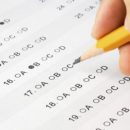In two years, students will face College Board’s new SAT. To prepare for it, high schools may make changes of their own.
In March, College Board president David Coleman announced the new SAT will have an optional essay, easier math questions, and no penalty for guessing. The board says this effort aims to boost the scores of lower income students. Their scores are, on average, lower than their more affluent peers who spend hundreds of dollars on test prep services.
The College Board’s goal is to remove the strategic elements from the exam. So the only preparation needed comes from regular schoolwork. If students need any more help, there are in-house experts to guide them. Angie Cullinan, who is currently the guidance counselor at Hopkins Academy in Hadly, Massachusetts, but has been in her field for eleven years, is one of these experts.
Even though Cullinan believes wealthier students will always have an edge on the test, she applauds the “free service” College Board will provide. The free service College Board will offer is a series of video tutorials by Khan Academy. The website’s wide range of instructional videos — on everything from art history to microeconomics — has received over four hundred million views.
The site’s popularity aside, guidance counselor Fred Itterly at Northampton High School questions the videos’ teaching ability.
He says, “I think you can see the guy doing the problems, write on a white board right as you watch. Pretty cool. But you know, how about if he gets stuck and how do you ask questions and interact if you really don’t know the math? I’m afraid, you know, it’s got limitations that way.”
Despite the College Board’s plans, many high school counselors are not changing much in their current procedures.
Itterly, however, believes the best way to prepare students for college entrance exams would be to familiarize them with the testing atmosphere.
“What enlightened districts would do is pay for everybody to take the PSAT, which is cheap,” Itterly says. “It’s an easy way to have everybody be exposed to the format of a standardized test that’s very similar to the one that’s coming that has high stakes, and the PSAT does not.”
What about students who are poor testers or who don’t want to spend four hours on a Saturday taking a test? Both Cullinan and Itterly boast the good news that there are over eight hundred colleges that do not require tests for admission. Among those listed are Mount Holyoke, Smith, and Hampshire colleges. Many large schools, such as University of Massachusetts Amherst, are not on the list because they still require test scores for complete application to their schools.
Ed Blaguszewski is the spokesperson for UMass Amherst. Although test scores are an important factor in the university’s admissions, Blaguszewski says an applicant’s high school record, including their G.P.A and extracurricular activities, has more weight.
He says, “We certainly look at SAT and ACT scores. We also look at very strongly high school experience and in many ways we think students who achieve excellence in high school are really providing a very good indication that they will do well in college, even if their test scores are not as high as other students’.”
Like counselors Cullinan and Itterly, Blaguszewski does not expect his school to change much in its procedures.
In fact, many education professionals hope the new SAT will be the only change needed to raise the scores of lower income students. They won’t know for sure until students take the test in two thousand sixteen.
